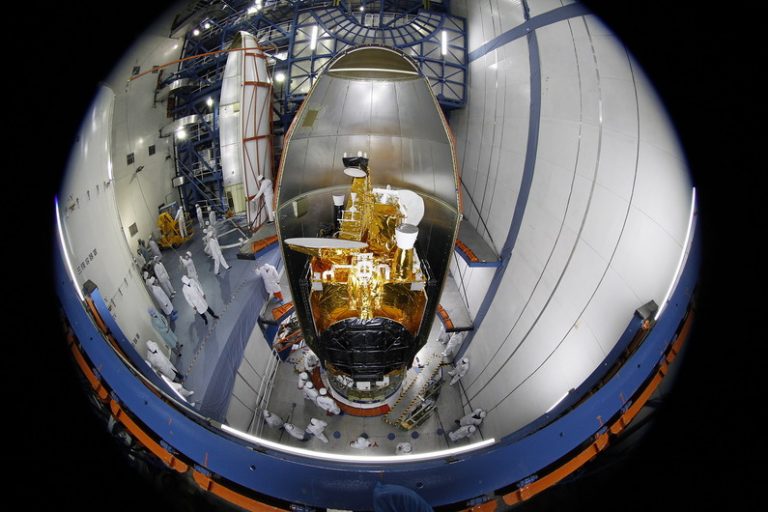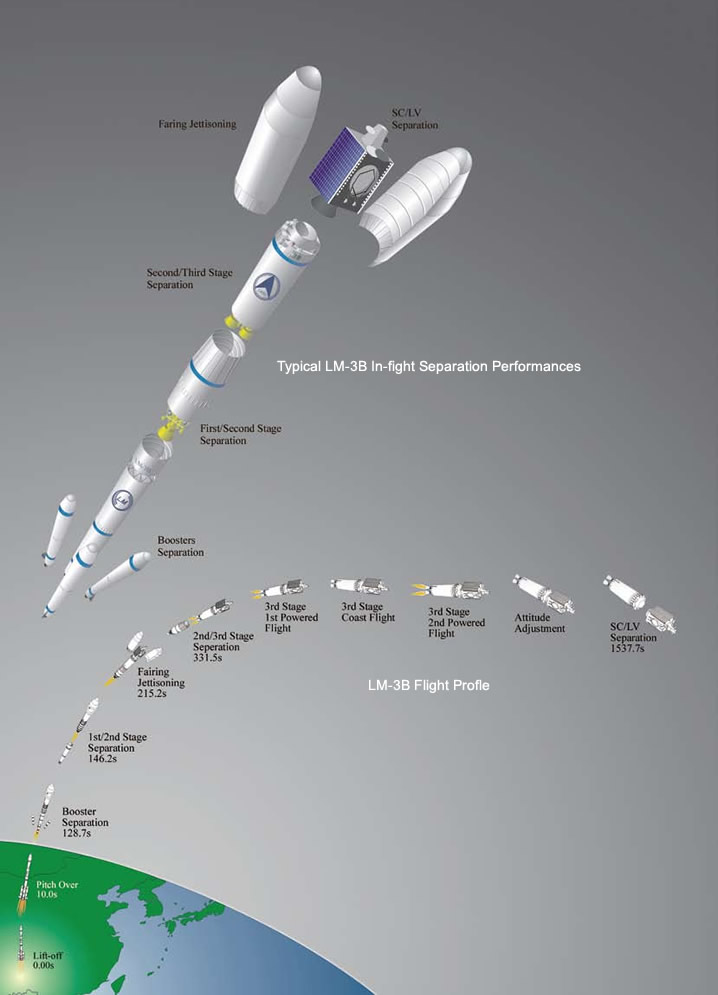Featured image: Xinhua
Lift Off Time | September 9, 2021 – 11:50 UTC | 19:50 BJT |
|---|---|
Mission Name | Zhongxing-9B |
Launch Provider | China Aerospace Science and Technology Corporation (CASC) |
Customer | China Satellite Communications Co. Ltd |
Rocket | Long March 3B/E |
Launch Location | LC-2, Xichang Satellite Launch Center, China |
Payload mass | 5,100 kg (11,000 lb) |
Where did the satellite go? | Geostationary Earth Orbit (initial orbit: Geostationary Transfer Orbit) |
Did they attempt to recover the first stage? | No, this is not a capability of the Long March 3B/E rocket |
Where did the first stage land? | It crashed back over land in China |
Did they attempt to recover the fairings? | No, this is not a capability of the Long March 3B/E rocket |
Were these fairings new? | Yes |
This will was the: | – 136th flight of a Long March 3 (any variant) – 5th launch of a Long March 3B/E variant in 2021 – 33rd Chinese launch of 2021 – 87th orbital launch attempt of 2021 (81st successful) |
Where to watch | If available, an official replay will be listed here |
How did it go?
China Aerospace Science and Technology Corporation (CASC) successfully launched the Zhongxing-9B satellite atop a Long March 3B/E rocket. The Zhongxing-9B is a communications satellite, which will replace the Zhongxing-9A currently in orbit.

The Zhongxing-9B
The Zhongxing-9B (ZX-9B) is a Chinese communications satellite, which will replace the Zhongxing-9A satellite. The Zhongxing-9A (ZX-9A) satellite was launched in 2017 and has an expected lifetime of 15 years. It was launched on a Long March 3B rocket, but an anomaly during the third phase of the flight failed to place the satellite into its designated orbit. As a result the satellite needed to burn a huge amount of fuel to reach its nominal orbit, greatly reducing the expected lifespan of the satellite.
While it is unclear what the capabilities of the ZX-9B are, it is likely similar to the ZX-9A, which was based on the DFH-4 bus and was equipped with eighteen 36 MHz and four 54 MHz BSS Ku-band transponders. The ZX-9B will be used to transmit television across China, its surrounding islands, and ships sailing close to the country.
The satellite will initially be placed in a geostationary transfer orbit (GTO) and will gradually raise its orbit over the next few months using the DFH-4’s onboard propulsion system.

Long March 3B/E
The Long March 3B/E is an expandable three stage medium-lift rocket, with an optional fourth stage. It is a member of the Long March 3 rocket family, and is the enhanced version of the Long March 3B, having larger side boosters and a larger first stage, allowing for a greater Geostationary Transfer Orbit (GTO) payload capacity. While the 3B was first launched in 1996, the 3B/E variant was introduced in 2007.

Boosters
The 3B/E has four side boosters, 16.1 m in height, which each have a single YF-25 engine. The engines are powered by Unsymmetrical Di-Methyl Hydrazine (UDMH) and Nitrogen Tetroxide (N2O4). Each of the boosters produce 740 kN of thrust at lift-off, burn for 140 seconds and have a specific impulse (ISP) of 260 seconds.
First Stage
The 3B/E’s first stage is 3.35 m in diameter and 24.76 m in height. It uses four YF-21C engines, which also burn UDMH and N2O4 propellant. The stage has an ISP of 260 seconds and produces 2,960 kN of thrust at sea level.
Second Stage
The second stage is 3.35 m in diameter and 12.9 m tall, and is powered by a YF-24 engine module, which contains a main YF-22E engine, and a single YF-23 Vernier engine to provide attitude control. Similarly to the side boosters and the first stage, the engine runs on UDMH and N2O4. This stage produces 742 kN of thrust and will burn for approximately 185 seconds during flight.
Third Stage
The 3B/E third stage is 12.4 m (40.7 ft) long and is powered by two YF-75 engines. Unlike the other stages, this stage is powered by liquid hydrogen (LH2) and liquid oxygen (LOx). The engines only produces 157 kN of thrust in vacuum, but has an ISP of around 440 s.
Optional Fourth Stage
It is unclear whether this stage was used to launch the Zhongxing-9B, but this stage has a singular YF-50D engine, which again runs on UDMH and N2O4. The stage produces 6.5 kN of thrust and has an ISP of 315 s.






